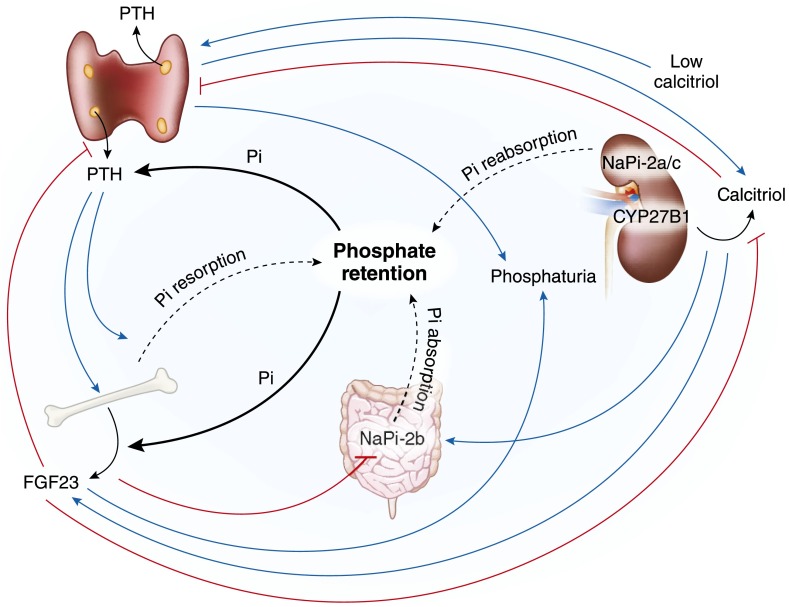Figure 1.
Phosphate homeostasis: A complex crosstalk between the kidney, parathyroid gland (PTG), bone, and intestine. Phosphate reabsorption in the kidney via NaPi-2a/c cotransporters, absorption in the gut via NaPi-2b cotransporter, and resorption from the bone contribute to the retention of phosphate (black dashed lines). Phosphate retention increases levels of the parathyroid hormone (PTH) and fibroblast growth factor 23 (FGF23) hormones (black solid lines), both of which inhibit phosphate reabsorption in the kidney by decreasing expression of NaPi-2a/c, resulting in phosphaturia. The increase in FGF23 decreases phosphate absorption in the gut by inhibiting NaPi-2b expression and suppressing circulating calcitriol, which in turn, will inhibit intestinal absorption of phosphate. A negative feedback loop exists between PTH and FGF23; PTH increases FGF23 (both directly and indirectly via calcitriol), whereas FGF23 inhibits PTH. High calcitriol levels inhibit PTH and stimulate FGF23, whereas low calcitriol levels stimulate PTH. Dysregulation of this homeostasis in CKD results in excess phosphate retention, high levels of FGF23 and PTH, and low levels of circulating calcitriol. Solid blue lines indicate stimulation, and red lines indicate inhibition. Pi, phosphate; NaPi-2a/c, sodium/phosphate type 2 cotransporters.

